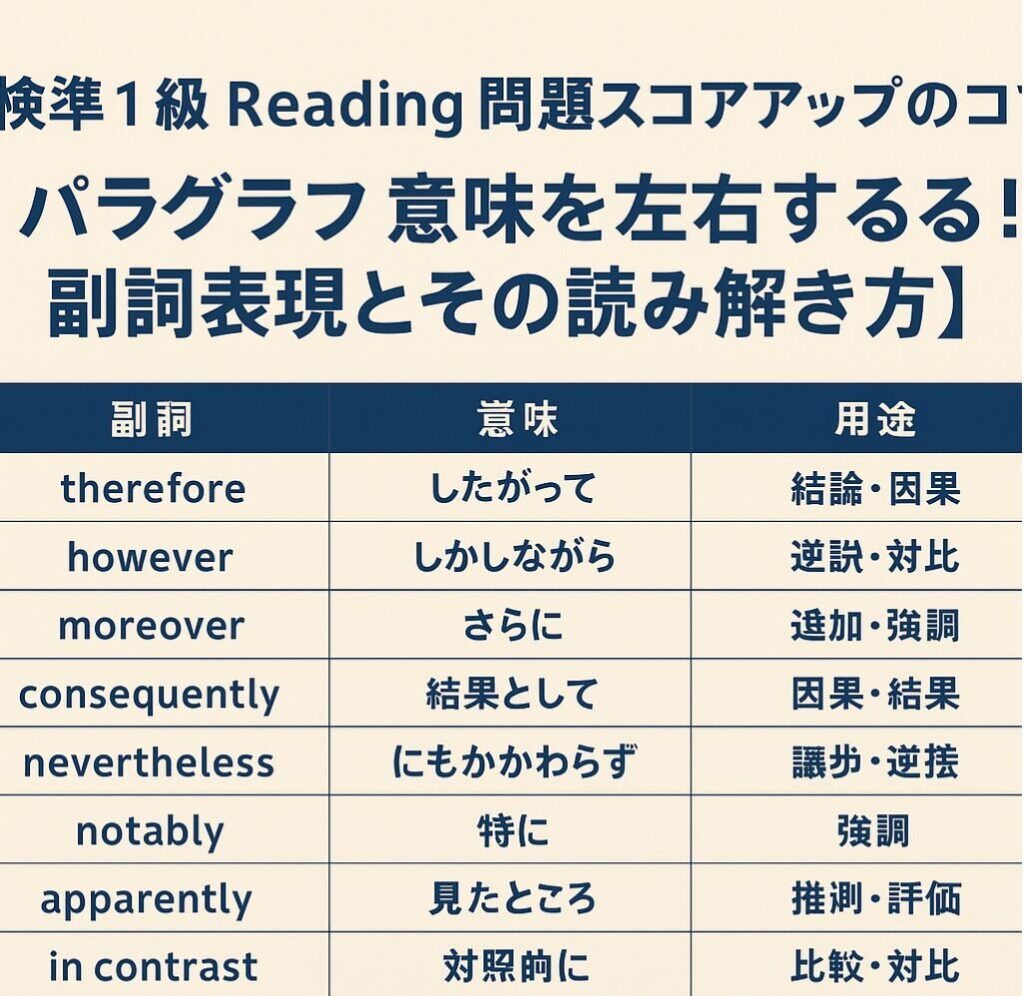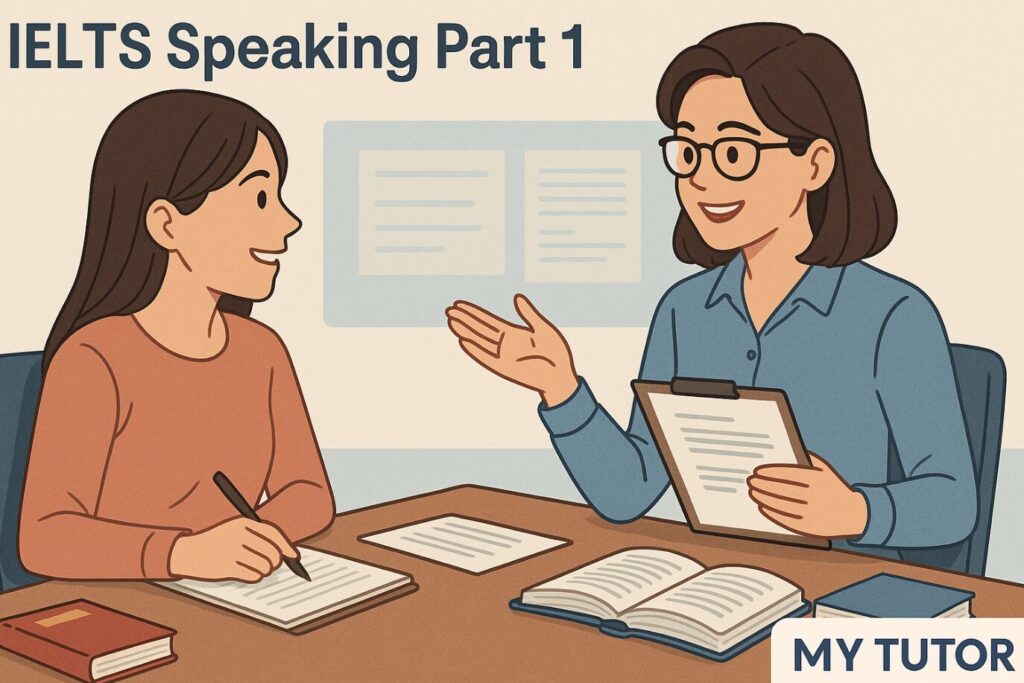
【Part 1 どんな話題にも対応!自分の「好きな○○」ストーリーを準備しよう】
🌟 Part 1攻略のカギは「自分語りのストック」!
IELTSスピーキングのPart 1では、受験者がリラックスして自然な会話ができるかが評価のポイントです。よく出るのは、「趣味」「食べ物」「音楽」「映画」「休日の過ごし方」など身近なトピック。でもいざ本番になると、どう答えればいいか迷う人も多いのでは?
そこで活用できるのが、自分の「好きな○○」ストーリーです!
✅「好きな○○」ストーリーとは?
「好きな映画」「好きな食べ物」「好きな場所」など、自分の興味を1つのストーリーとして話せるよう準備しておく方法です。具体的なエピソードがあることで、内容に説得力が増し、話の展開もしやすくなります。
例:好きな映画について聞かれたときの回答例
I really like the movie “The Pursuit of Happyness.” It’s based on a true story, and it really inspired me. I first watched it when I was in high school, and it made me think about how important it is to never give up. The actor Will Smith did an amazing job, and I cried at the end!
このように、エピソード+感想+理由があると、自然に話が広がります。
🧠 よく出る「好きな○○」の例と準備ヒント
| トピック | 準備する内容のヒント |
|---|---|
| 好きな食べ物 | どこで食べた?なぜ好き?家族との思い出は? |
| 好きな本/映画 | いつ読んだ/観た?どんな場面が印象的? |
| 好きな場所 | 旅行先?近所?どう感じた?また行きたい? |
| 好きなスポーツ | 観る?プレーする?誰と?きっかけは? |
| 好きなアプリ/ゲーム | どんな機能が便利?生活にどう役立ってる? |
💬 テンプレートで練習しよう!
どのトピックでも使えるシンプルな構成はこちら:
I like [○○] because [理由]. I first [体験] when [いつ]. Since then, I [現在の関わり]. One of the best memories I have is [エピソード].
この型を使えば、どんな話題でも対応できる「ストーリー型回答」が作れます。
🎯 まとめ
- IELTSスピーキングPart 1は「即興で話す力」が求められるが、準備できる内容も多い。
- 「好きな○○」をベースにストーリーを複数準備しておくと、話題に応じて使いまわせる。
- エピソード+感情+理由で構成すると、より自然で評価されやすい話し方に!
次の練習では、**「自分の好きなもの5つ」**を挙げて、それぞれについて30秒で話せるように練習してみましょう!
試験対策に強いオンライン英会話 ”マイチューター”
















